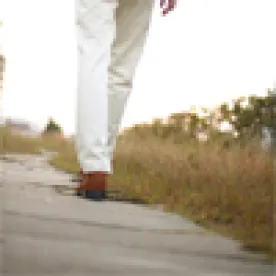On September 18, 2014, the Illinois Supreme Court held in Burns v. City of Centralia, 2014 IL 116998, that the city had no duty to protect plaintiff from an open and obvious sidewalk defect. In that case, plaintiff Virginia Burns filed a negligence action against the City of Centralia after she tripped and fell on an uneven sidewalk and sustained injuries when she was on her way to a health clinic. The city argued that the defect was "open and obvious" and was therefore under no duty to protect the plaintiff from the sidewalk defect. The plaintiff, on the other hand, argued that the "distraction exception" to the open and obvious rule applied because she was looking at the door to the clinic when she fell, which distracted her from looking at the sidewalk where she was walking. Therefore, she argued that the city owed a duty of reasonable care.
According to section 3-102 of the Local Governmental and Governmental Employees Tort Immunity Act, a local public entity "has the duty to exercise ordinary care to maintain its property in a reasonably safe condition." 745 ILCS 10/3-102 (West 2012). However, common law has developed the "open and obvious" rule, which states that a party who owns or controls land is not required to foresee and protect against an injury if the potentially dangerous condition is open and obvious. Conditions, such as sidewalk defects, may constitute an open and obvious danger.
Illinois law recognizes an exception to the open and obvious rule, known as the "distraction exception." The distraction exception applies where the possessor of land of has reason to expect that the invitee's attention may be distracted, so that he will not discover what is obvious, or will forget what he has discovered, or fail to protect himself against it. Case law has identified the distraction exception where circumstances required the plaintiff to divert his or her attention from the open and obvious danger, or otherwise prevented him or her from avoiding the risk. The court has held that the plaintiff has to establish that the distraction was reasonably foreseeable.
In this case, the plaintiff failed to identify any circumstances that required her to divert her attention from the open and obvious sidewalk defect or otherwise prevented her from avoiding the sidewalk defect. The plaintiff admitted that she did not focus her attention on the door and steps of the clinic in order to avoid another hazard or potential hazard, nor did she avoid the defect because some other task at hand required her attention. The court held that the distraction exception only applies when the plaintiff was actually distracted, and the mere fact of looking somewhere else does not constitute a distraction. In this case, the only distraction was that the plaintiff's attention was fixed on the door and steps of the clinic.
Illinois courts have disagreed as to what circumstances are sufficient to invoke the distraction exception, and have therefore applied the distraction exception inconsistently. Other jurisdictions provide support for applying the distraction exception only where the plaintiff has shown evidence of an actual distraction that the landowner has created or controlled. Although the exception has been applied liberally by Illinois courts in recent years, this is the first time the court has narrowed the exception and placed more of a burden on the plaintiff. Thus, the bar in which a plaintiff must establish that he or she was "distracted" in order to place liability on a governmental entity has been raised.



 />i
/>i

